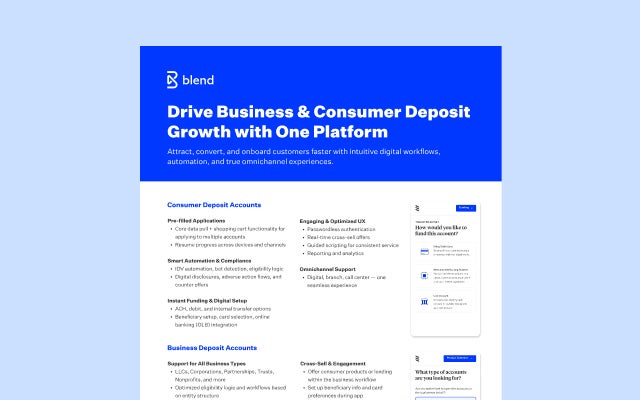December 1, 2021 in Challenges and solutions
The ROI potential of cloud computing and banking
Financial institutions are finding that cloud solutions are implemented faster, cost less to run, and require little maintenance.

Cloud computing — the delivery of scalable and elastic software solutions as a service via the internet, usually on a pay-as-you-go basis — has been used in banking for over a decade now.
Benefits for any banking institution.
Subscribe for industry trends, product updates, and much more.
While early adopters took a tentative approach, its use has accelerated in recent times, as has its functionality. New cloud-based digital banking solutions bring together advanced data analytics and artificial intelligence into a single offering that can improve a financial services provider’s efficiency and productivity while also delivering valuable insight into customer wants and needs.
This evolution has meant that the cloud is now considered a critical investment for financial institutions who are looking to stay competitive. In fact, the global finance cloud market is expected to grow by over 22% between 2021–2026. And it is predicted that 80% of all enterprise and mission-critical workloads will move to the cloud by 2025.
The ROI benefit of cloud computing and banking
The day-to-day operation of traditional legacy systems is notoriously expensive for financial services organizations. Custom-built proprietary solutions typically require extensive internal resources to design, build, and maintain. What’s more, these solutions often operate in silos, meaning they don’t integrate well with other key systems.
Greater agility is a driver of future success, and this is where cloud solutions come into their own. They typically don’t require financial services organizations to rip and replace their existing core services. Instead, they offer integrations that connect new technology with older systems and, once connected, the new functionality can be simply switched on.
The ROI benefit can be significant. Tech leads at financial services providers may no longer need to invest in their own servers, networks, or other expensive infrastructure that has a limited shelf life. And there are usually no maintenance fees, either.
Financial firms may no longer need to pay for computing power they don’t need. Processing capacity can easily be scaled up or down to meet a change in demand, eliminating unnecessary costs in the process.
How greater ROI and savings unlock new efficiencies for financial institutions
Financial institutions can reap many rewards from a solution that is implemented faster, costs less to run, and requires little to no maintenance. With a cloud banking platform, they are able to become more agile, adapt fast to new market conditions, and quickly roll out new, innovative products that meet evolving customer needs.
For these institutions, this can result in a modern, flexible way of working that supports an omnichannel approach and helps them compete more effectively in a competitive playing field.
By offering a cloud-based digital application experience for customers, for example, they are offering the convenience and flexibility that today’s borrowers are looking for, but taking away the hefty, paper-based processes that have historically taken up loan teams’ time.
As a result, these teams can handle higher loan volumes while reaping the benefits of faster cycle times. Shorter cycles help production staff produce more loans per month while maintaining fixed origination costs.
Introducing Blend: Helping you get the most out of cloud computing and banking
Blend is a cloud-based platform that powers end-to-end customer journeys for any banking product, allowing lenders to level-up their digital offering.
Its unified digital experience, featuring an easy-to-use interface, gives borrowers the ability to apply for a personal loan, deposit account, or any other consumer financing quickly and easily. For example, customers can complete a credit card or personal loan application in as little as two minutes.
What’s more, Blend’s integration with existing technology and embedded data connectivity means loan verification is led by the borrower. They can connect to their asset, payroll, or tax accounts in just a few clicks, delivering a convenient experience for them while reducing the burden on the lender.
This digitized process reduces friction and minimizes customer drop off. As a result, more leads are converted into funded loans. In fact, financial services firms can see submission rates above 60% on credit cards and above 75% on personal loans with Blend. And due to increased efficiencies in the process, lenders can handle the resulting uptick in loan volume with ease.

Ready to learn more about the benefits of Blend?
Find out what we're up to!
Subscribe to get Blend news, customer stories, events, and industry insights.


